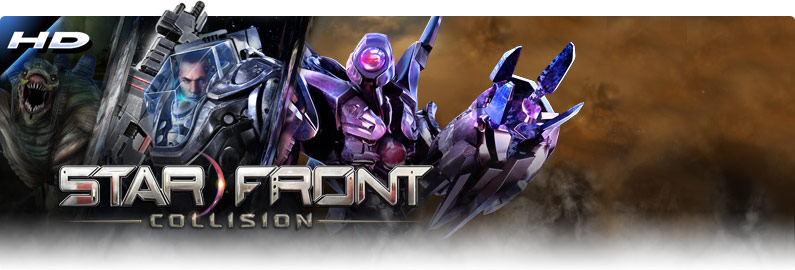


Astronomers today are working hard to figure out what these medium-sized worlds are like. There are no planets in our solar system between the size of Earth and Neptune, yet most of the planets found by Kepler fall in this size range. Earth is the largest rocky planet in the solar system, and Neptune is the smallest gas planet in the solar system. One of the biggest surprises that the Kepler space telescope discovered was that the most common size for a planet is in between the size of Earth and Neptune. More than 2,000 stars showed transits in the brightness measurements, revealing the presence of a whole zoo of planets that range in size from as small as Mercury to larger than Jupiter, and everything in between. Most of the planets discovered so far have been found by the Kepler space telescope, which stared at 150,000 stars for 4 years, taking precise brightness measurements every half hour.
STARFRONT COLLISION HD NOTE 5 HOW TO
Now we know how to discover one planet-we measure the brightness of a star very carefully for a while, and if it dips in brightness for a few hours during a transit, we may have discovered a planet! But since the year 2000, thousands of planets have been discovered. Without a surface and at such a high temperature, HD 209458 b is a bad place to look for life. Since HD 209458 b is so close to its star, it is extremely hot-about 1,200☌! Like Jupiter, this planet is a “gas giant,” meaning it has no solid surface. Jupiter orbits the Sun five times farther than the distance from the Earth to the Sun, while HD 209458 b orbits its star 21 times closer than Earth. Though its size is similar to that of Jupiter, HD 209458 b is very different from Jupiter. The little b represents that it was the first planet discovered in the system (if later planets are discovered around the same star, they will be given the letters c, then d, and so on). The amount of light that went missing from HD 209458 (1.5%) must have been caused by a planet bigger than Jupiter-the biggest planet in our solar system. You can see that the brightness dipped below its normal brightness for a while before returning to its normal brightness -the dip in brightness is the transit event which occurs because the Jupiter-sized exoplanet orbiting HD 209458 is blocking out some of the starlight.Figure 1 - This figure shows brightness measurements over time for the star HD 209458.When a planet passes in front of a star and blocks out starlight, we call that event a transit. If the planet is very large, it blocks out lots of starlight, and if the planet is smaller, like Earth, it blocks only a tiny fraction of the star’s light. The amount of missing starlight tells astronomers how big the planet is. As the planet blocked out starlight from HD 209458, the astronomers on Earth measured slightly less starlight than normal. That tiny change in brightness, shown in Figure 1, was a huge discovery, because it was caused by a planet that passed between the Earth and HD 209458. They measured the star’s brightness on two different nights and found that the star got dimmer by about 1.5% for 3 h, before returning to its normal brightness, on two separate nights. The astronomers were measuring the brightness of the star very carefully-with enough precision to detect changes in the star’s brightness as small as 1%. HD 209458 is slightly bigger and hotter than the Sun, and is located about 150 light years away, in the constellation Pegasus. It is a bit like trying to see a mosquito at night, flying next to a car’s headlight, from 100 miles away! So how in the world do we find other worlds? One Little Eclipse Makes One Big BreakthroughĪ breakthrough came in the year 2000, when astronomers pointed their telescope at a star called HD 209458. Finding planets orbiting distant starts is difficult because planets are much dimmer than the stars they orbit, and both the stars and planets are so far away. We have known about the planets orbiting the Sun in our own solar system for thousands of years, but it took until 1995 to find a planet orbiting a distant Sun-like star. Why Is It So Hard to Find Planets Orbiting Distant Stars? Transits of exoplanets have revealed that the most common planets orbiting Sun-like stars are a bit bigger than the Earth and smaller than Neptune-unlike any planet in our Solar System. When exoplanets pass in between their star and the Earth, they block out a bit of starlight, causing a small dip in the star’s brightness. Most exoplanets have been found by looking for tiny changes in the brightness of stars.

We call these far-away planets exoplanets. Recently, thousands of planets have been discovered orbiting distant stars.


 0 kommentar(er)
0 kommentar(er)
